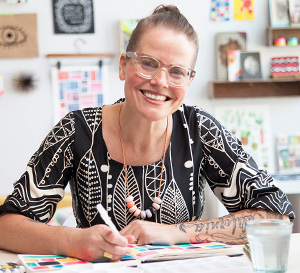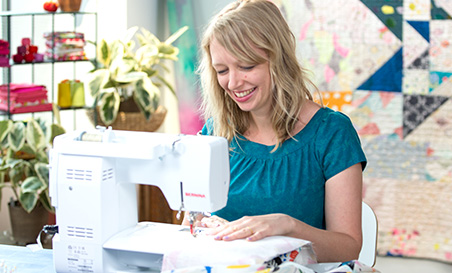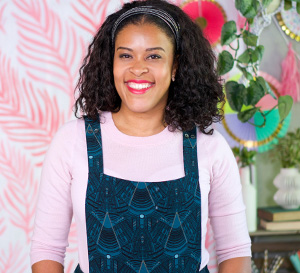
Intermediate
|
3 hours 45 sec
|
00:54
|
|
31:02
|
|
28:05
|
|
03:51
|
|
27:37
|
|
30:02
|
|
29:39
|
|
25:43
|
|
03:52
|
Professional artist and storyteller Christopher Clark's favorite subject to paint is the light itself, and in nowhere is it more important than the portrait. Inspired by 19th century art and the Impressionist Movement, this class formally guides you through all stages of developing a portrait in oil paint. Learn about light, shape, value, and anatomy sculpturally, as you push and pull with charcoal and add and subtract paint. Begin with a charcoal study, then move on to underpainting. Then follow with blocking out general shapes with paint and then adding a few more layers of detail and fine-tuning. While portraits can certainly be challenging, they are also immensely rewarding.
Learn how to:
What you'll get:
Here’s what you’ll need:
- Brushes - Christopher recommends several brushes for each size so you can have a different paint color on each brush and save time washing them
- Rosemary Ivory Synthetic Bristle Brush, Brush shape: Long Flat, Sizes: 10, 6, 2, 0
- Other brushes - a few brushes for underpainting, like cheap chip brushes from a hardware store: 1”, 2”, and 3”, small liner brush, soft fluffly brushes for blending edges
- Medium such as odorless mineral spririts, Gamblin solvent-free fluid, and solvent-free gel, or Galkyd medium and gel
- Williamsburg oil paint in Titanium white, cadmium lemon, yellow ochre, cadmium orange, transparent oxide brown, transparent oxide red,
- cadmium red medium, alizarin crimson, ultramarine blue, pthalo blue, pthalo green
- Canvas boards or stretched canvases - minimum size should be 11×14” and 16x20” is nice to have a little more room. Christopher is using 18x24“.
- Palette - Christopher uses a glass palette. You can use any piece of 1/4” glass you have
- Palette Knives - Christopher uses a Bob Ross palette knife (it has two edges on it, one long and one short) and a triangle-shaped palette knife
- Paint Solvent - Turpenoid, Gamsol, and any kind of Oderless Mineral Spirits are all fine
- Brush Cleaning Jar: Christopher uses a Silicoil Brush Cleaning Tank. You’ll need this or some kind of jar about 3/4 full of solvent.
- Paper towels or rags
- Drawing Materials including a paper sketch pad, charcoal, kneaded rubber erasers, foam brush, and spray adhesive
- Easel
- Apron
- Brush Cleaner such as “Masters Brush Cleaner” or “Studio Soap”
- Download the class PDF for this materials list with additional notes from Christopher as well as reference photos
Downloads:
- Paint a portrait in oils
- Hold your paint brush
- Start with a charcoal sketch to determine the shapes and values of your painting
- Consider the importance of anatomy
- Underpaint
- Properly clean your brushes and palette
- Develop your portrait in layers
What you'll get:
- Unique video lessons on how to paint a portrait using oil paintings
- 9 HD video lessons you can access online anytime, anywhere
- Detailed supplies list
- Step-by-step expert instruction from artist Christopher Clark
- The ability to leave comments, ask questions, and interact with other students

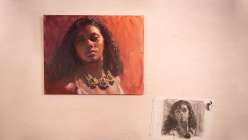
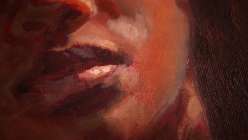
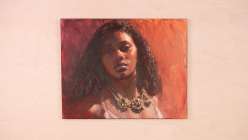
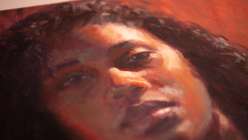
Member Gallery
Browse members' projects from this class and share your own work! Learn how to take great photos here.
Load More
Transcript
Class PDF
Paint a Portrait in Oils Reviews
17 users recommended this class to a friend
Freebird G
The instruction was very thorough and helpful. Unfortunately the lighting for the videos was on the dark side so it wasn't always clear to view the portrait as it was being worked on. Great class overall.
More than 3 months ago

Creativebug Staff
Thanks for your feedback, Freebird. This class was filmed in 2020 when we were all sheltering-in-place so unfortunately Chris wasn't able to come in and film with us and benefit from our studio lighting. But so glad to hear you liked the class otherwise!
More than 3 months ago
Rhonda P
It was great to be able to see the whole portrait process from start to finish. He also provided a lot of great tips along the way.
More than 3 months ago







